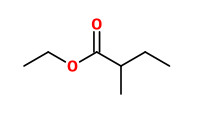Magnolia x alba - syn. Michelia longifolia Blume, Michelia × alba DC. - Magnoliaceae - white champaca, Weiße Champaca
Tree, up to 17m tall, native to Indonesia, cultivated as ornamental (Asia); Branches and leaves (long elliptic to narrowly ovate) fragrant after being crushed. Flowers very fragrant, petals 10, white, 3-4cm long.
„This hybrid is grown as an ornamental and used medicinally. The plant is usually not fruiting and is propagated by grafting.“
http://www.efloras.org/florataxon.aspx?flora_id=2&taxon_id=250090229
https://sites.google.com/site/efloraofindia/species/m---z/m/magnoliaceae/magnolia/magnolia-alba
„In Indonesia, the pleasantly fragrant flower is used and arranged together with Jasminum sambac as flower garland, especially wore by brides during traditional wedding ceremony. The flowers are similarly used in Thailand, where they are worn as traditional wedding garlands by the bride and groom.“ wikipedia
„The chemical composition of the flower concrete oil and leaf oil of Michelia alba have both been examined by a combination of GC/MS and retention indices. Approximately 100 compounds were characterized in both oils, with linalool being the major component of the flower oil (72.8%) and the leaf oil (80.1%), respectively. The most abundant minor components of the flower oil were α-terpineol (6.04%), β-phenylethyl alcohol (2.58%), β-pinene (2.39%), methyl 2-methylbutyrate (1.46%), geraniol (1.23%), and 1,8-cineole (1.03%). The most abundant minor components of the leaf oil were β-caryophyllene (3.0%), β-elemene (1.7%), caryophyllene oxide (1.68%), and nerolidol (1.19%).“
[Ueyama, Yoshitaka, et al. „The chemical composition of the flower oil and the leaf oil of Michelia alba DC.“ Journal of Essential Oil Research 4.1 (1992): 15-23]
„The main compounds in headspace of fresh Michelia alba flowers included α-myrcene, (S)-limonene, (R)-fenchone, linalool, camphor, caryophyllene, germacrene D, etc., a greater number of compounds than for frozen flowers and withered flowers.“
[Shang, Chunqing, et al. „Rapid determination of volatile constituents of Michelia alba flowers by gas chromatography–mass spectrometry with solid-phase microextraction.“ Journal of Chromatography A 942.1-2 (2002): 283-288]
„…Magnolia flower oil of Michelia longifolia and M. alba. The new ingredient began to attract real interest after being used successfully in a fragrance. Unfortunately, only 500 g of the oil were available worldwide, so it could not be used in an overdose. Therefore, Maurice used the right dosage for the launch of this product in the feminine fine fragrance 'Tocade' (Rochas, 1994), a bipolar accord of rose and amber. The analysis of the unknown oil revealed that it consisted mainly linalool (ca. 70%), and some of the top-note components were well-known by chemists working in the flavor area, i.e., methyl 2-methylbutanoate and ethyl 2-methylbutanoate, both fruity, very red strawberry with exotic fruits facets. The production of Magnolia flower oil is nowadays reaching ca. 1 t per year, and it is one of Maurice's favorite ingredients used in most of his creations, like the above mentioned success 'Be Delicious' (DKNY, 2004).
[Roucel, Maurice, and Fanny Grau. „The importance of new molecules in selective perfumery.“ Chemistry & Biodiversity 11.10 (2014): 1462-1469]
Main components of a commercial (China) steam distilled essential oil of the flowers were linalool (64.6%), methyl 2-methylbutyrate (5.6%), β-caryophyllene (3.7%), β-elemene (3.0%), methyleugenol (2.2%), (E)-β-ocimene (2.0%), and (Z)-β-ocimene (1.4%).
[GCMS Analysis Magnolia Flower EO, Magnolia x alba, Lot 8, E Dr.R.S.Pappas EOU (2024)] PDF retrieved 2025/11/05

Blume, C.L., Flora Javae nec non insularum adjacentium (1828-1851) Fl. Javae, vol.2, t.2 (1851) [A.J. Latour]
plantillustrations.org

Magnolia × alba, Yulin, China (2025) © ecolanbo CC BY-SA 4.0 inaturalist.org
VIDEO: Magnolia from China (IFF-LMR)


